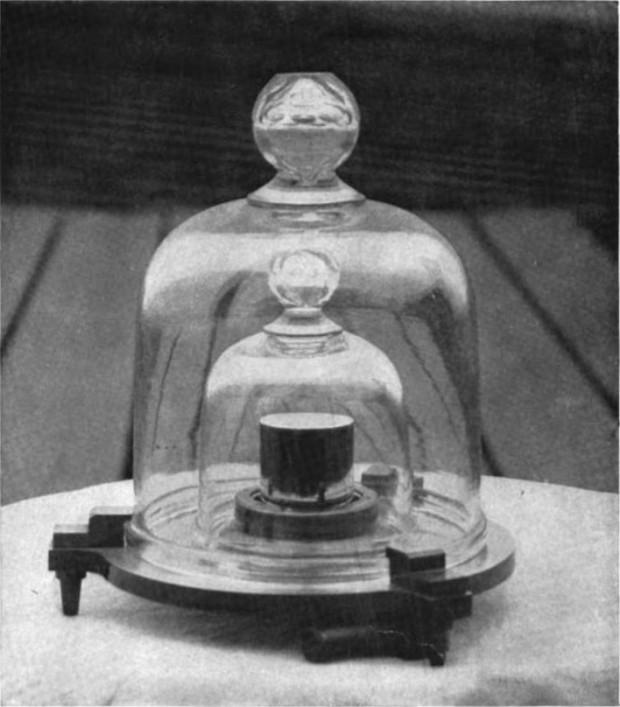652
Etalon kilogram weighs less than one kilogram
Imperfect kilogramm
metal cylinder the size of a palm, known as the international standard kilogram, tucked away in a vault near Paris, under three sealed glass bells. Forged in 1879, the year of an alloy of platinum and iridium, it was presented as the perfect kilogram - the gold standard, which can be compared to any other kilogram.
The problem is that the standard kilogram is losing weight: the last weigh-in in 1998, he was on 0, 05 milligrams lighter than its official copies of other laboratories around the world. Experts are not sure what happened to weight, but according to one theory, the copy kept in the hands of often that they added weight. Another theory argues that the alloy from which the reference is made kilogram, the air is gradually emerging.

Australian scientists have created a kilogram sphere of silicone in the hope that can count the number of atoms which it contains, to create a more precise standard. American physicists at the National Institute of Standards and Technology (NIST) are trying to redefine the kilogram in terms of the amount of voltage needed to lift the weight. But so far, nothing can come close to the standard kilogram.
Why do we have to worry about being perfect kilogram in storage or not? Kilogram is used as a building material for other measures of measurement: Joule - is the amount of energy required to move one kilogram one meter and candela, a measure of brightness, measured in joules per second.

In the end, it can cause problems in a number of industries, particularly in the technology sector, if microchips will produce more processes at high speed, even a tiny change can lead to disaster.
The unreliability of the reference kilogram "will be evident in the electronics industry over the next 10-20 years" - warns physicist Richard Steiner from NIST. If your next smartphone zaglyuchit, you will know what a piece of metal to blame.
via factroom.ru

metal cylinder the size of a palm, known as the international standard kilogram, tucked away in a vault near Paris, under three sealed glass bells. Forged in 1879, the year of an alloy of platinum and iridium, it was presented as the perfect kilogram - the gold standard, which can be compared to any other kilogram.
The problem is that the standard kilogram is losing weight: the last weigh-in in 1998, he was on 0, 05 milligrams lighter than its official copies of other laboratories around the world. Experts are not sure what happened to weight, but according to one theory, the copy kept in the hands of often that they added weight. Another theory argues that the alloy from which the reference is made kilogram, the air is gradually emerging.

Australian scientists have created a kilogram sphere of silicone in the hope that can count the number of atoms which it contains, to create a more precise standard. American physicists at the National Institute of Standards and Technology (NIST) are trying to redefine the kilogram in terms of the amount of voltage needed to lift the weight. But so far, nothing can come close to the standard kilogram.
Why do we have to worry about being perfect kilogram in storage or not? Kilogram is used as a building material for other measures of measurement: Joule - is the amount of energy required to move one kilogram one meter and candela, a measure of brightness, measured in joules per second.

In the end, it can cause problems in a number of industries, particularly in the technology sector, if microchips will produce more processes at high speed, even a tiny change can lead to disaster.
The unreliability of the reference kilogram "will be evident in the electronics industry over the next 10-20 years" - warns physicist Richard Steiner from NIST. If your next smartphone zaglyuchit, you will know what a piece of metal to blame.
via factroom.ru






















